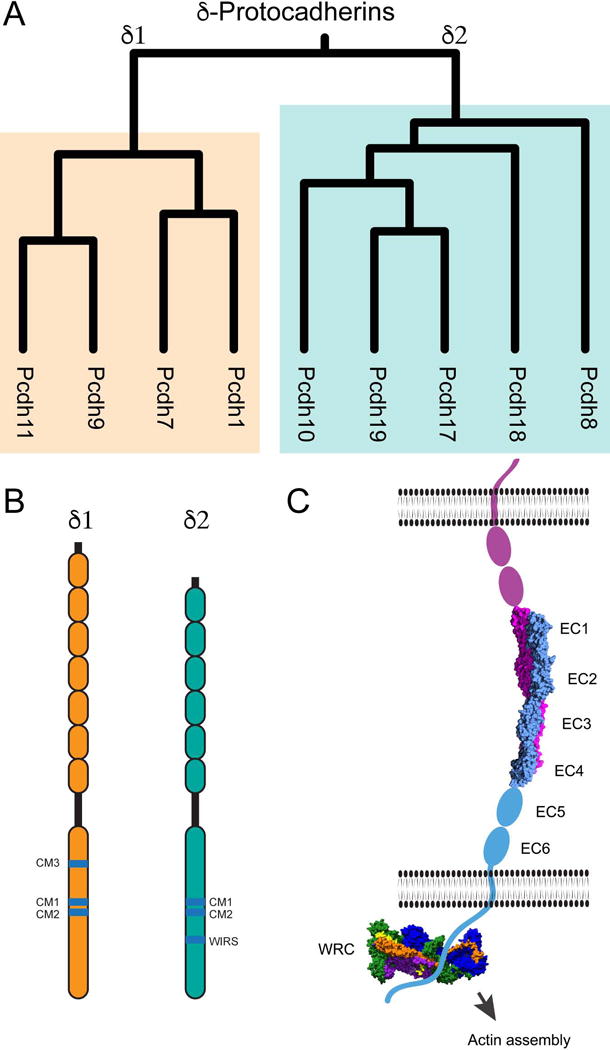Figure 2.

A. In the zebrafish optic tectum, neurons expressing a common δ-pcdh are arranged into radial clusters, or columns. These columns are tightly associated with a radial glia cell. The primary processes fasciculate as they project to the synaptic neuropil where their dendrites and local axon collaterals arborize within a restricted volume. Neurons within a column are siblings, derived from a common progenitor that expresses the same δ-pcdh.
B. Based on data from pcdh19, the δ-pcdhs influence the production of neurons, as there is an increase in proliferation and the production of pcdh19+ neurons in pcdh19 mutants. Mutants exhibit defects in fasciculation during their projection to the synaptic neuropil, and in their arborization. The restricted volume over which neurons within a column arborize, and δ-pcdh-mediated adhesion between axons and dendrites could bias synaptogenesis toward sibling neurons.
C. Shown here is a model in which the distinct colors represent clones that express a distinct δ-pcdh. If each protocadherin acts in a similar manner and in parallel, differential expression of the δ-pcdhs provides a mechanism for partitioning the optic tectum into discreet functional modules.
